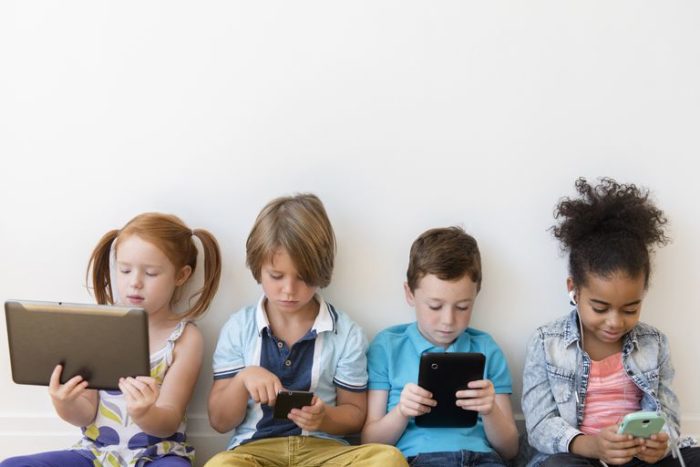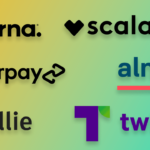Now Reading: The iPad Kids Generation: Navigating Screens and Childhood
-
01
The iPad Kids Generation: Navigating Screens and Childhood
The iPad Kids Generation: Navigating Screens and Childhood

The term ipad kids has become a common label for the generation of children growing up with tablets and smartphones as constant companions. You’ve likely seen them: toddlers expertly swiping through videos in a restaurant or young children captivated by games during a car ride. This phenomenon reflects a major shift in modern childhood, where digital devices play a central role in entertainment, education, and even social interaction. While these tools offer incredible opportunities, their widespread use also raises important questions for parents and educators. Understanding both the benefits and potential drawbacks is key to navigating this new digital landscape and raising well-rounded children.
This article will explore the world of ipad kids, examining the reasons behind the rise of screen time, the potential effects on development, and strategies for creating a healthy tech-life balance for your family.
Key Takeaways
- Understanding “iPad Kids”: This term refers to children who use digital devices like iPads extensively from a young age, often for entertainment and distraction.
- The Double-Edged Sword: Technology offers significant educational benefits but also poses risks related to developmental delays, social skills, and physical health if overused.
- Parental Role is Crucial: Setting clear boundaries, choosing high-quality content, and modeling healthy screen habits are essential for guiding children’s digital experiences.
- Balance is Key: The goal isn’t to eliminate screens entirely but to integrate them into a balanced lifestyle that includes plenty of physical activity, creative play, and face-to-face interaction.
- Quality Over Quantity: The type of content children engage with matters more than just the amount of time they spend on a screen. Interactive, educational apps are far better than passive video consumption.
What Defines the “iPad Kids” Phenomenon?
The term ipad kids isn’t a formal diagnosis but a cultural descriptor for children who seem perpetually attached to a screen. It points to a generation for whom digital fluency is second nature, learned alongside walking and talking. This phenomenon is driven by several factors, including the convenience tablets offer to busy parents, the explosion of child-focused apps and content, and the increasing integration of technology into school curricula. For many families, an iPad is a multipurpose tool—it’s a pacifier, a babysitter, an educator, and an entertainer all rolled into one.
The accessibility and intuitive design of these devices make them incredibly appealing to young children, who can easily navigate interfaces designed for simple taps and swipes.
The Rise of Digital Pacifiers
In today’s fast-moving world, parents often juggle multiple responsibilities. Handing a child a tablet can provide a much-needed moment of peace, whether it’s to get through a grocery store trip, cook dinner, or take an important phone call. This use of devices as “digital pacifiers” is a major contributor to the rise of ipad kids. While effective in the short term, relying on screens to manage a child’s behavior can become a habit that is difficult to break.
It may prevent children from learning essential self-soothing and emotional regulation skills. Instead of learning to handle boredom or frustration, they learn to seek digital distraction. This pattern can set the stage for a dependency on screens for emotional comfort later in life.
The Potential Downsides of Excessive Screen Time
While technology isn’t inherently bad, unchecked screen time can have significant negative consequences for developing minds and bodies. Health organizations worldwide have issued guidelines on screen time for a reason. For ipad kids, the risks are amplified because their exposure begins at a very young age when crucial developmental milestones are being reached. Overreliance on tablets can interfere with everything from language acquisition and social skills to physical health and sleep patterns.
Recognizing these potential downsides is the first step for parents to create a healthier relationship between their children and technology. It’s about being mindful and proactive rather than letting screen time become an unregulated default activity.
Impact on Cognitive and Social Development
One of the primary concerns about ipad kids is the impact on their developing brains. Early childhood is a critical period for building neural pathways through physical interaction with the world. Children learn about cause and effect by dropping a block, texture by touching sand, and spatial awareness by crawling around a room. Passively watching a screen doesn’t provide the same rich, multi-sensory feedback.
Furthermore, excessive screen time can hinder the development of social skills. Children learn to read facial expressions, understand tone of voice, and practice conversational turn-taking through face-to-face interactions. When a child spends more time with a device than with people, they miss out on these vital learning opportunities. This can lead to difficulties in making friends, showing empathy, and navigating social situations in the real world.
Physical Health Concerns for Young Users
The sedentary nature of tablet use also poses physical health risks. Children who spend hours on their devices are not running, jumping, and climbing, activities that are essential for developing strong muscles, healthy bones, and good coordination. This lack of physical activity is a major contributor to rising rates of childhood obesity.
Beyond general fitness, there are more specific physical concerns for ipad kids:
- “Tech Neck”: The posture children adopt while hunched over a screen can lead to neck and back pain.
- Eye Strain: Staring at a bright screen for long periods can cause digital eye strain, characterized by dry eyes, headaches, and blurred vision.
- Sleep Disruption: The blue light emitted from screens can interfere with the body’s production of melatonin, the hormone that regulates sleep. Using a tablet before bed can make it harder for children to fall asleep and reduce the quality of their rest.
The Other Side of the Screen: The Benefits of Technology
It would be unfair to paint technology with a purely negative brush. When used thoughtfully, devices like iPads can be powerful learning tools. The digital world is overflowing with high-quality educational content that can make learning fun and interactive. For many ipad kids, their device is a gateway to creativity, knowledge, and new skills. From apps that teach coding basics to platforms that offer virtual museum tours, the possibilities are vast. Technology can also open doors for children with learning disabilities, offering alternative ways to absorb information and express themselves. The key is to shift the focus from passive consumption to active, engaged learning.
Educational Apps and Interactive Learning
The App Store is filled with thousands of applications designed specifically for children’s education. These apps can teach everything from letter and number recognition to complex scientific concepts. Unlike passive cartoons, the best educational apps require active participation. They might ask a child to solve a puzzle, trace a letter, or build a virtual machine.
This interactive element helps reinforce learning and can keep children engaged for longer periods. Parents can curate a library of high-quality apps that align with their child’s age and interests, turning screen time into a productive and enriching experience. Websites like Forbes Planet often highlight tools and resources that can help navigate the educational tech space, offering insights into what makes a good learning app.
Fostering Creativity and Problem-Solving
Modern technology offers countless avenues for creativity. Apps for drawing, music creation, and digital storytelling allow children to express themselves in new and exciting ways. They can create their own animations, compose a song, or design a digital comic book. These activities not only foster creativity but also develop important problem-solving skills. For example, a child using a simple coding app learns to think logically and break down a large problem into smaller, manageable steps. Guiding ipad kids toward these creative outlets can help them see their device not just as an entertainment box, but as a powerful tool for creation.
Finding a Healthy Balance: Strategies for Parents

Managing screen time is one of the biggest challenges of modern parenting. The goal is not to ban technology but to integrate it into a child’s life in a healthy and balanced way. This requires establishing clear rules, being an active participant in your child’s digital world, and modeling good behavior yourself. For ipad kids and their families, finding this balance is an ongoing process of negotiation and adjustment. It’s about teaching children to become mindful digital citizens who can use technology purposefully without letting it control their lives. Creating a family media plan can be an effective way to set expectations and ensure everyone is on the same page.
Setting Clear Boundaries and Rules
Consistency is key when it comes to screen time rules. Children thrive on structure, and having predictable limits around device use can prevent daily battles.
Effective Rule-Setting Strategies:
- Time Limits: Establish daily or weekly time limits for recreational screen use.
- Tech-Free Zones: Designate certain areas of the house, like the dinner table and bedrooms, as screen-free zones.
- Tech-Free Times: Set specific times, such as the first hour after school or the hour before bed, when all screens are put away.
- “Earn Your Screen Time”: Link screen time to the completion of other activities, like homework, chores, or outdoor play.
By setting these boundaries, you help your child understand that screen time is a privilege and just one part of a varied and interesting life.
The Importance of Co-Engaging with Content
Instead of letting your child use their device in isolation, make screen time a shared activity whenever possible. Sit with them, play the game they are playing, and ask questions about what they are doing. This is called co-engagement. It allows you to monitor the content they are consuming and helps you connect with their interests. Talking about the games they play or the videos they watch can open up conversations about important topics like sportsmanship, problem-solving, or online safety. When you co-engage, you transform screen time from a solitary activity into a moment for bonding and learning together. It helps ensure that your ipad kids are interacting with quality media.
Choosing Quality Content Over Mindless Entertainment
Not all screen time is created equal. The distinction between passively watching unboxing videos and actively engaging with a story-based educational app is immense. As a parent, your role is to be a media curator for your child.
|
Type of Content |
Description |
Value |
|---|---|---|
|
Interactive/Creative |
Apps that involve problem-solving, building, drawing, or coding. |
High |
|
Educational |
Content designed to teach specific skills like reading, math, or science. |
High |
|
Pro-Social |
Shows and games that model positive behaviors like empathy and cooperation. |
Medium |
|
Passive Entertainment |
Watching back-to-back videos with no interactive element. |
Low |
|
Overly Commercialized |
Content filled with ads or focused on selling merchandise (e.g., toy unboxing). |
Very Low |
Take the time to research apps and games before downloading them. Look for content that encourages critical thinking, creativity, and active participation. Prioritizing this kind of quality content ensures that the time your ipad kids spend on their devices is as beneficial as possible.
The Future of “iPad Kids”
The children growing up today as ipad kids will enter adulthood with a level of digital literacy that is unprecedented. They will be native users of technologies that are still emerging. The long-term effects of this digital upbringing are not yet fully understood, but it’s clear that the skills they are acquiring—navigating complex systems, multitasking, and communicating digitally—
will be valuable in their future careers and lives. The challenge for parents and society is to ensure that these digital skills are complemented by strong real-world abilities. The future for ipad kids will depend on their ability to leverage technology as a tool while maintaining the human connections and experiences that define a fulfilling life.
Conclusion
The “ipad kids” generation is here to stay. Technology is deeply woven into the fabric of our society, and shielding children from it completely is neither practical nor beneficial. Instead of viewing tablets and smartphones as the enemy, we can see them as powerful tools that require careful and intentional management.
By setting clear boundaries, prioritizing high-quality content, encouraging a balance with offline activities, and engaging with our children in their digital worlds, we can mitigate the risks of excessive screen time. The goal is to raise a generation of children who are not just consumers of technology, but thoughtful, creative, and responsible digital citizens who know how to use their screens to enhance their lives, not escape from them.
Frequently Asked Questions (FAQ)
Q1: At what age is it appropriate to introduce a tablet to a child?
Most experts recommend avoiding screen time for children under 18-24 months, except for video-chatting. For children aged 2 to 5, the American Academy of Pediatrics suggests limiting screen use to 1 hour per day of high-quality programming, co-watched with a parent.
Q2: How can I reduce my child’s dependency on their iPad?
Start by gradually reducing screen time and replacing it with engaging offline activities. Create a predictable schedule with tech-free periods. Be firm with the rules you set and, most importantly, spend quality one-on-one time with your child to show them that real-world interaction is more rewarding.
Q3: Are all apps for kids bad?
Not at all. Many apps are designed to be educational and to foster creativity. The key is to research and choose apps that are age-appropriate, interactive, and free from excessive advertising. Look for apps that encourage problem-solving and active thinking rather than passive viewing.
Q4: How does screen time affect a child’s sleep?
The blue light from screens can suppress melatonin, a hormone that controls the sleep-wake cycle. This can make it harder for children to fall asleep. It is recommended to stop all screen use at least one hour before bedtime and to keep devices out of the bedroom.
Q5: What are some good alternatives to screen time?
There are endless alternatives! Encourage outdoor play, reading books together, working on arts and crafts, playing board games, helping with cooking, or building with blocks or LEGOs. The goal is to engage their minds and bodies in different ways.
















